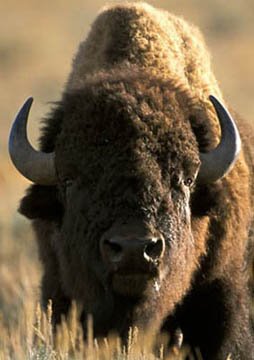Wednesday, August 30, 2006
History Hike
Possible future backpacking trip: Appalachian Trail from Harper's Ferry, WVA, to Gettysburg, PA (best done when autumn leaves are out)
A talk with a c0-worker a couple of days ago brought up Gettysburg, a place for which I have the fondest memories. I had the privilege of working there as a park ranger for the National Park Service during the summers of 1972 and 1973 while on break from college. I had such a great time giving talks to park visitors and answering their questions, visitors from every state and even foreign countries. Probably the best question asked of one of our rangers was from a youngster: "Did the soldiers hide behind the monuments during the battle?"
The vast Civil War battlefield park is situated in an agricultural area known for its orchards and fruit production, and the landscape setting is beautiful. There has been much effort in recent years toward restoring the battlefield to the way it was in July 1863 when the battle was fought. Orchards have been replanted, wooden fences erected, and friends of the park have steadily been buying out old businesses and buildings that encroached the battlefield and leveling them. The many stone walls that lace the battlefield, some probably there since the battle, are one of my favorite features of the site. Add to this the rolling hills, wheatfields, creeks, and rocks and boulders, and you have quite a setting, ideal for a hike off the Appalachian Trail.
When I was there the Gettysburg battlefield could get crowded during summer days, but at dusk, when traffic was light and things were quiet, the place would be eerie when a mist enveloped the fields and monuments and gave everything a ghostlike appearance. I haven't been to Gettysburg since my ranger days, but I'm anxious to go back there.
Harper's Ferry would be an ideal starting place on the Appalachian Trail for such a trip, the quaint, historic town and its old buildings being located at the confluence of the Potomac and Shenandoah Rivers.
Tuesday, August 29, 2006
Fighting and Grieving


These photos of the violent head-butting clash of two buffalo bulls and a bull trying to upraise a dead brother that was gunned down at a hunt sanctioned by Montana livestock officials illustrate the life of buffalo at Yellowstone National Park.
Right now is the season of the buffalo rut at Yellowstone, when most of the 4,000 wild buffalo gather in the lush Lamar and Hayden Valleys. This is the time when bulls challenge each other for the right to court buffalo chicks. Buffalove can be tough.
An article in a Montana newsaper described the scene (above photo) after a buffalo bull had been shot: "Do bison grieve? Decide for yourself. Three bulls slowly gathered around their fallen brother, the carriage of their tails registering distress. One, in particular, seemed especially anguished; he pawed the motionless shoulder as if to rouse him. Getting no response, he nudged the body with his head, then with the shank of his horn. Again and again he nudged and butted and pushed; finally, in an act of utter pathos, he lay down in resignation next to the body."
The reporter was criticized for attributing human traits and emotions to the buffalo, but the reporter shot back, "Anyone who has spent time with bison knows that they are gregarious, social animals who form strong bonds with each other. It is arrogant of human beings to believe that we are the only ones who have a claim to emotions like happiness and grief."
The buffalo at Yellowstone are the subjects of much controversy, some saying that as the last wild herd they should be allowed to thrive naturally, whereas others say the bison numbers should be controlled because if the herd gets too large it will outgrow its habitat and starve.
Both sides agree that habitat preservation is a key, and construction in the area should be controlled. "The most serious threat to the bison is habitat encroachment, not hunting," writes a resident of the Yellowstone area. "Every person who buys a 20-acre 'ranchette' in bison habitat, fences it off and develops it does more harm to the long-term survival of the bison than a hundred hunters. The people building are destroying bison habitat that cannot be replaced. The real question we should be asking ourselves is, 'How can we preserve this habitat?' "
Monday, August 28, 2006
Grandma Gatewood: Legend in Keds

As a postscript to my Appalachian Trail adventure, here are some facts I collected about an amazing woman who puts any modern-day backpacker to shame.
Grandma Emma Gatewood (1888–1973) was the first woman to hike the 2,168-mile Appalachian Trail from Georgia to Maine solo. She did it in 1955 at the age of 67, wearing Keds sneakers and carrying an army blanket, a raincoat, a plastic shower curtain for shelter, a cup, first aid kit, raincoat, and one change of clothes, all of which she carried in a homemade bag slung over one shoulder. Her hiking diet consisted mainly of dried beef, cheese and nuts, supplemented by wild food she would find along the way.
She hiked the entire trail again in 1960 and then again at age 75 in 1963, making her the first person to hike the trail three times (though her final hike was completed in sections). She was an Ohio farmer’s wife who had 11 children and 23 grandchildren. Local newspapers picked up on her story, leading to a profile in Sports Illustrated and an appearance on The Today Show.
She first hiked the trail after reading about it in National Geographic magazine. “I thought it would be a nice lark,” she said, adding “It wasn’t.” Another time she complained, “For some fool reason, they always lead you right up over the biggest rock to the top of the biggest mountain they can find.”
She also walked 2,000 miles of the Oregon Trail from Independence, Missouri, to Portland, Oregon, averaging 22 miles a day.
Friday, August 25, 2006
Wednesday, August 23, 2006
Tuesday, August 22, 2006
Monday, August 21, 2006
Food & Drink: Black Cow to the Rescue

 Munching on trail mix
Munching on trail mix Cassandra picking blueberries, a favorite of bears, along the trail.
Cassandra picking blueberries, a favorite of bears, along the trail. I read before my last trip to the Appalachian Trail five years ago that hikers crave certain food and drinks as they backpack long distances. I found that to be true on that trip and even more so this time. We had the usual beef jerky, Pop Tarts, and fantastic trail mix made up by Cassandra. Actually, we brought enough trail mix to feed the greater part of China for a day. But I craved a few things more than anything: ice cream, ice cold beer and pizza.
We didn't rough it the whole way while out on the trail because in this part of Virginia there were campgrounds, and with them camp stores and restaurants. At one store I bought vanilla ice cream and root beer and devoured the traditional black cow. We even had a blackberry milk shake at one place. Heaven. We also stopped and had beer and a real meal, but for the most part we dug into our trail grub.
Next: Wildlife on the Trail - Bashful Bears and Prozac Deer; but Virginia, where were the snakes?
Backpacking the Shennies

 Me at Front Royal, VA, at the start of the journey on the Appalachian Trail. Stairs lead to the trail. And that's my "sweaty, stinky, hiking companion" Cassandra. What a gift. (as if I smelled like a rose)
Me at Front Royal, VA, at the start of the journey on the Appalachian Trail. Stairs lead to the trail. And that's my "sweaty, stinky, hiking companion" Cassandra. What a gift. (as if I smelled like a rose)Take nothing for granted. Not one blessed, cool mountain day or one hellish, desert day or one sweaty, stinky, hiking companion. It is all a gift. — CINDY ROSS, Journey on the Crest, 1987
I can sit back comfortably now and think about the tough ascents on the Blue Ridge Mountains of Virginia’s Shenandoah National Park. Long-distance Appalachian Trail hikers have dubbed the mountains here the “Shennies.” With an unforgiving 30-pound stuffed backpack (my house on my back) every step of the eight-day journey was tough with blistered feet and sweatsoaked clothes, but I would do it all again.
My hiking buddy Cassandra and I logged 106 miles on the Appalachian Trail that runs through the park. It was an incredible experience that mixed fun, wonder, and downright agony at times. With the Appalachian Trail, you never knew what was coming next: a smooth downhill could viciously turn into an unrelenting rocky uphill that could take the spirit right out of you. The hiking poles that my buddy Bruce gave me really helped. The hike was truly a slow-motion roller coaster.
I can’t complain about the weather. We had a couple of hot days and only one day of rain; overall it was fine and the nights were nice and cool.
Two nights stand out: one in a cleared area near the trail where I bedded down on a rock shelf that overlooked lighted towns in a valley far below. To augment that view, a full moon rose and gave the whole scene an indescribable grandeur. The best night was at a site on a side trail, where a nice, level cleared space in the woods was found to be the perfect camping spot with plenty of firewood. It was here in the wee hours of the morning that I heard a bear snorting about, but nothing came of this as I stared up at the elegant canopy of moonlit trees.
More photos and details to come.
Friday, August 18, 2006
Buffalo on the Rocks
Thursday, August 17, 2006
Oh let me be yo teddy bear
 Back from the Appalachian Trail in the Shenandoah Valley of Virginia. 106 miles in 7.5 days. Tough fun. Saw 5 black bears, including two cubs like the one above. Trip was an emotional and physical roller coaster. Details and photos forthcoming.
Back from the Appalachian Trail in the Shenandoah Valley of Virginia. 106 miles in 7.5 days. Tough fun. Saw 5 black bears, including two cubs like the one above. Trip was an emotional and physical roller coaster. Details and photos forthcoming.And, on the drive back home yesterday, I think I met Elvis. Really. Will supply details of this surreal encounter with one of the kindest, friendliest humans I have ever met.
Friday, August 04, 2006
Trailbound
Subscribe to:
Comments (Atom)
















